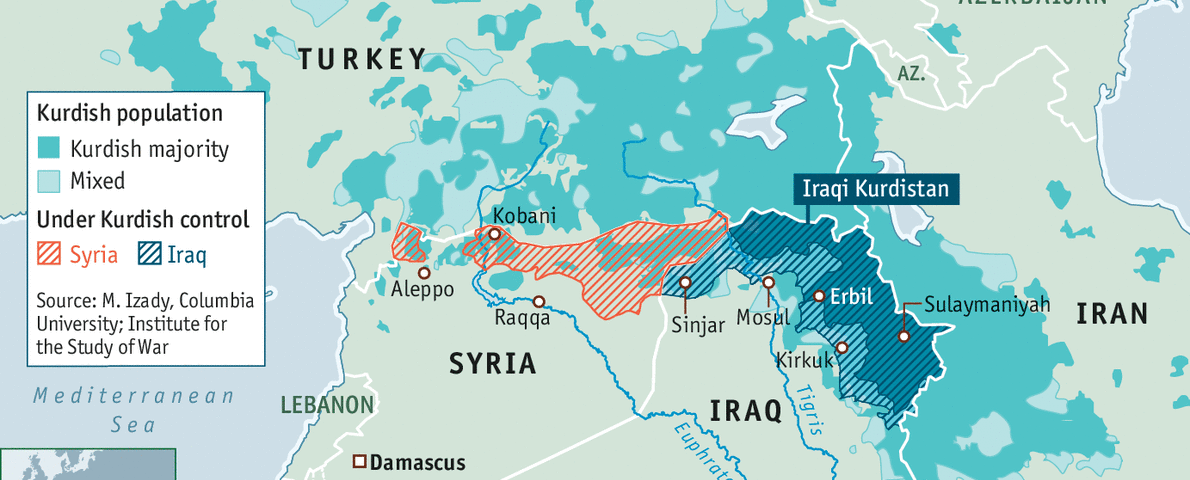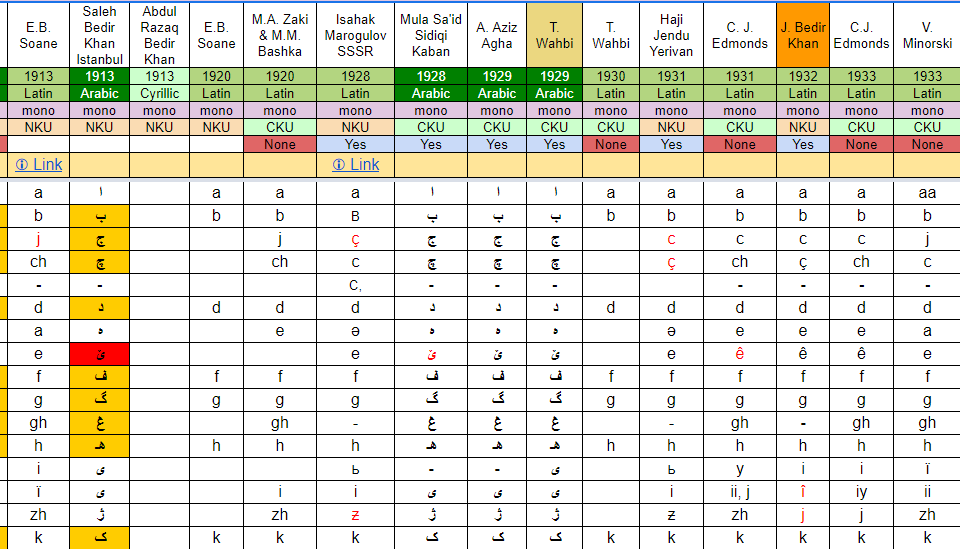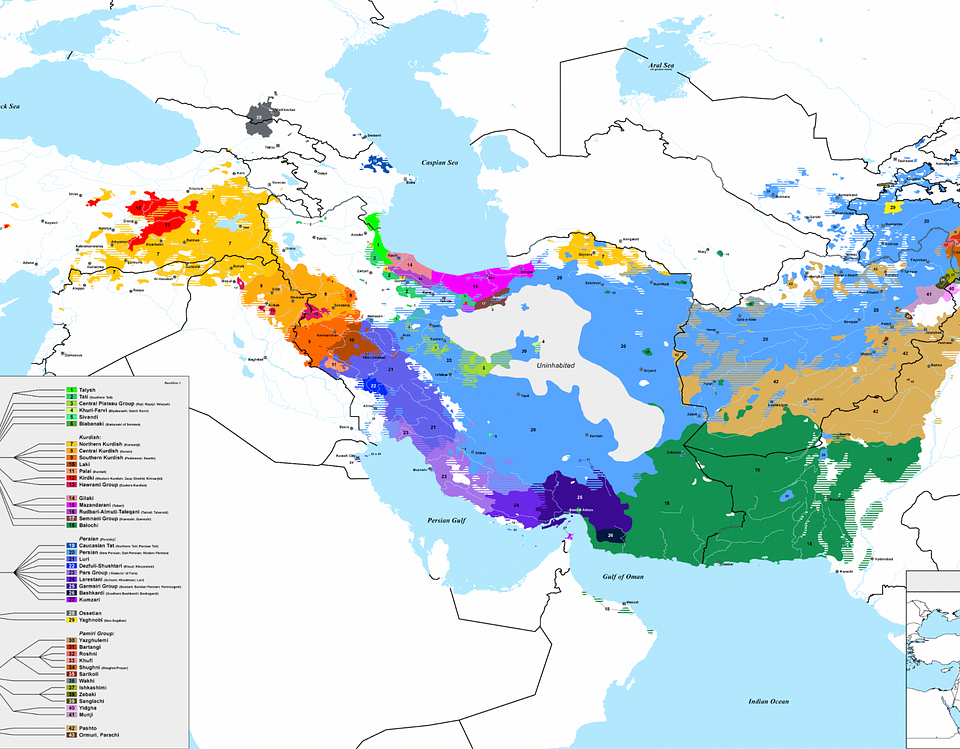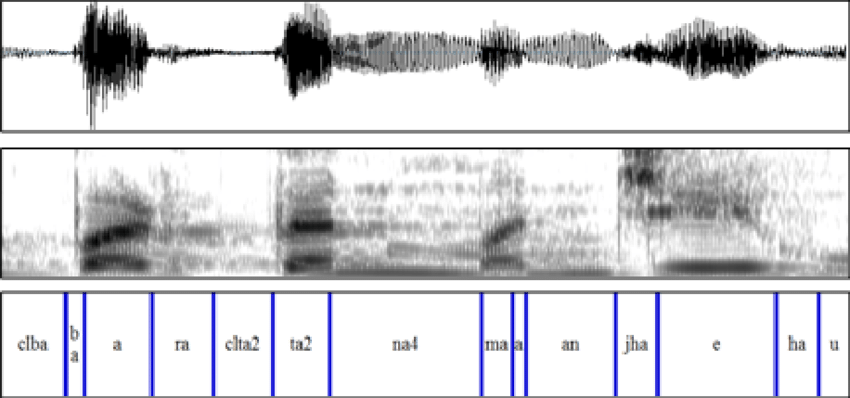Kurdish Unified Alphabet: A Gateway to National Connectivity
Kurdish Unified Alphabet: A Gateway to National Connectivity

The expansion of virtual connections and the availability of diverse sources of information on the Internet have raised new technical concerns related to the format and use of communication tools. Internet use has quickly become part of household life in the West. Kurdish immigrants have joined this trend, and in the process have become notable users of cyber-special communication
If anything, the history of Kurdish language has been one of astonishing resiliency. Approximately 40 million people worldwide currently speak various Kurdish dialects. Since the Kurdish homeland is divided among more than a dozen countries in the geographic heart of the Middle East-and makes up one of the largest stateless nations on earth-communication across international frontiers has been difficult. It is only since the late 1970’s that speakers of various Kurdish dialects have been able to connect across the states that administer Kurdistan. Most recently, in the age of computerized communication networks, Kurds are beginning a new chapter of the history of their language that may enable them to mobilize nationally to ensure that Kurdish is the primary language used by their children.
The future of Kurdish in a rapidly growing electronic world will depend on its ability to adequately express and convey the current needs and issues that face the people speaking it. At the same time, young Kurds that live far from Kurdistan have the ability to create a tradition of communicating in their native language on the Internet. This of course requires modernisation and the enrichment of Kurdish so that it does not limit such communication. Once such widespread communication is fully underway, it will be possible to establish a National Electronic Documentation Archive for the Kurdish Nation that is accessible to individuals worldwide. Such an archive will contain documents from all sectors of Kurdish society and bring Kurdish dialects and generations of Kurds closer together.
Today, Kurds use four different non-standards writing systems. Northern Kurds use a modified Latin-Turkish alphabet; Central Kurds use a modified Arabic alphabet; Kurds in the former USSR use a modified Cyrillic alphabet; and Kurds in South-eastern Kurdistan still largely use the Persian alphabet. The lack of a unified writing system makes publications and media in one part of Kurdistan useless in other parts. Therefore, there has been a widespread agreement that an urgent need exists for a common written system in Kurdish.
The Kurdish Academy of Language [KAL] realises that there are too many shortcomings with current Kurdish writing systems. These include workability, cross dialectal usage, and a lack of International IT-based Standards and representation for Kurdish. To avoid the communication obstacles presented by the existence of various Kurdish writing systems, KAL has introduced a standard Kurdish Unified Alphabet (KUAL) or Yekxisto based on International ISO-8859-1 Standards. This modern Kurdish (IS) alphabet contained some minor changes in the existing Latin based alphabet and adopting new sings. The new signs were introduced to improve the flexibility of the writing system in Kurdish. This effort was undertaken as part of KAL’s broad endeavour to revive and promote the use of the Kurdish language for the benefit of young Kurds. The system devised and presented here by KAL is simple and adequate for the purpose of communicating via the Internet and any electronic media.
The development of the Unified Kurdish Alphabet has proceeded along three lines. The first one letter has been designated for each sound (with the exception of digraph characters such as velar [ll], trill [rr], “jh” and “sh”). Second, no diacritical marks have been allowed that are difficult to convey via the Internet without the use of specialised programs. Specifically, all characters in the unified alphabet have been chosen carefully from the ISO-8859-1 “Latin 1” system for West European languages in order to ensure that the Kurdish characters follow one global standard only. (See the simple code table and associated links for a description of characters). Third, loaned letters that do not represent any phonemes of the Kurdish language, such as “ayin, ( ع )” “ḥā, ( ح )” and “ġayn, ( غ )” have been omitted of this unified orthographic scripting code. (local dialectal based adjustment by adding /E’/e’/, /H’/h’/, /X’/x’/ are allowed, for more details please view FAQ section). Loanwords need to naturalise and comply with common global Kurdish spelling rules, whilst local exceptional pronunciations are also justified. The Kurdish Unified Alphabet contains 34 characters including 4 digraph cases (jh, ll, rr, sh) and 4 characters with diacritics (é, í, ú, ù). It represents 9 vowels (a, e, é, i, í, o, u, ú, ù) and 25 consonants.
The unified writing system is also geared toward providing users with easy access to publication on the Internet and to electronic mail (e-mail), as well as the capability to create dictionaries, spell-checkers, and keyboard layouts using the most common operating systems and word processors (such as Microsoft products).
The unified electronic-friendly alphabet can appear in any browser without limitations. Any publication can be distributed and used in any part of Kurdistan or the world. The unified Kurdish alphabet will make language learning more popular among Kurds. The users of the unified alphabet will simply write in their own Kurdish dialect. The articles will be noted by the name of the used dialect. This will serve to increase curiosity among Kurds to follow a range of expressions in different Kurdish dialects. The unified alphabet should serve the Kurdish community to better understand and appreciate its own complexity. A common unified alphabet will also foster increased understanding of Kurdish national interests.
Empowering a Digital Kurdish Future
One of the primary objectives of the Kurdish Unified Alphabet is to facilitate easy digital communication, enabling users to publish texts online, engage in email correspondence, and even develop essential tools like dictionaries, spell-checkers, and keyboard layouts. Since the unified alphabet is based on a globally recognized standard, it ensures that Kurdish text can be displayed correctly on any browser and used across various platforms without the need for specialised software, as well as creating a globally recognized standard for Kurdish Language.
The impact of a unified writing system extends beyond convenience—it has the potential to revolutionize how Kurds engage with their language and each other. The KUAL allows Kurds from all regions to write in their own dialects while still adhering to a common script. This opens the door for greater curiosity and engagement with different Kurdish dialects, fostering a deeper appreciation of the language’s richness and diversity. Over time, the unified alphabet could play a critical role in strengthening the cultural and national identity of the Kurdish people, bridging linguistic divides, and promoting a sense of shared heritage.
In other words, the adoption of KUAL has far-reaching implications for the Kurdish-speaking community:
- Enhanced Digital Communication: The standardized script allows for the creation of online publications, email systems, and language tools like spell-checkers and dictionaries.
- Cultural Preservation: By modernizing Kurdish for digital use, KUAL ensures that the language remains relevant for younger generations.
- Educational Benefits: A unified script simplifies language teaching, particularly for Kurds in the diaspora.
- National Identity: A common writing system fosters a sense of unity and shared heritage among Kurdish speakers.
By adopting a unified alphabet, Kurds can ensure that their language not only survives but thrives in the digital age, keeping pace with the demands of modern communication. In doing so, the Kurdish community will be better positioned to preserve their language for future generations, while also fostering a stronger sense of unity among Kurds worldwide.



